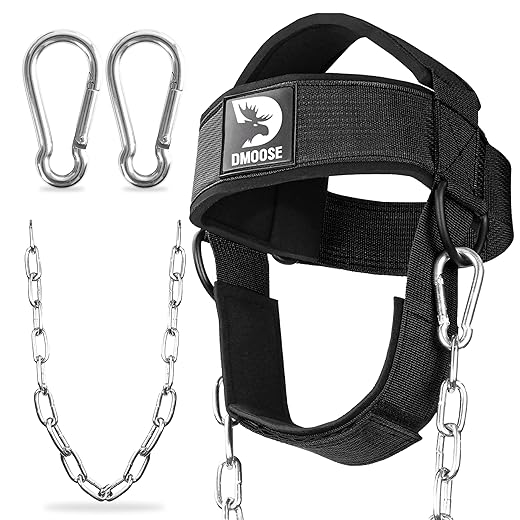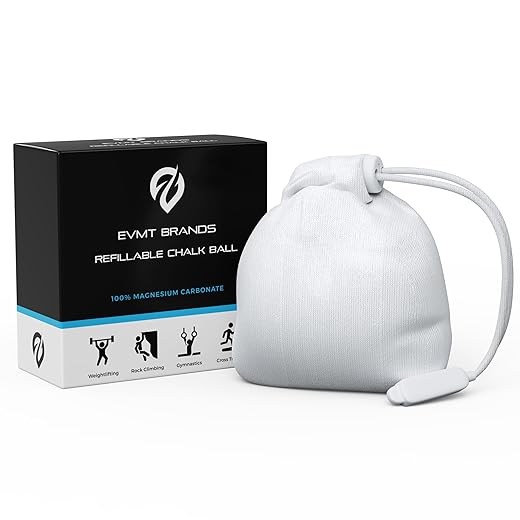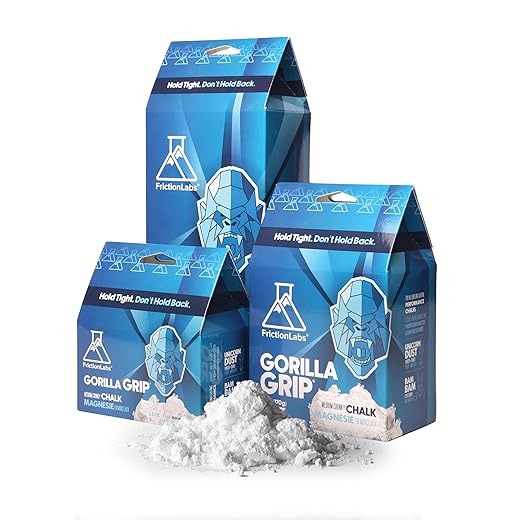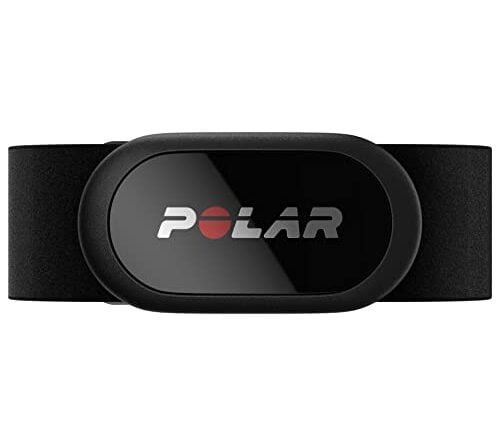
Hey there! So, if you’re into weightlifting, you probably know how important grip is. And that’s where weightlifting chalk comes into play. It’s a game-changer when it comes to improving your grip and preventing your hands from slipping. But with so many options out there, how do you select the best one? Well, that’s exactly what this step-by-step guide is all about. It’ll walk you through the process of finding the perfect weightlifting chalk that suits your needs and preferences. So, let’s get started and get that grip game strong!
Get Strong with These Top Picks



The Ultimate Lifting Chalk Guide: How to Use
Understand the Purpose of Weightlifting Chalk
Weightlifting chalk is a type of powdered magnesium carbonate that is commonly used by weightlifters and athletes to improve grip and prevent slipping during weightlifting exercises. To use weightlifting chalk, simply take a small amount and rub it into your hands, focusing on areas that come into contact with the barbell or dumbbell. This will help to absorb moisture and sweat, allowing for a more secure grip and reducing the risk of the weights slipping out of your hands during lifts.



Consider Your Training Environment
To assess the type of gym or training environment you will be using chalk in, start by checking if the facility allows the use of chalk. Look for any specific requirements or restrictions regarding its use. For instance, some gyms may have designated areas for chalk usage, while others may prohibit it altogether. If you’re unsure, ask the staff or check the gym’s rules and regulations. Remember, it’s important to follow any guidelines to ensure a safe and respectful training environment.
Research Different Types of Chalk
Researching different types of chalk can be an exciting and informative process. Begin by exploring the various types of weightlifting chalk available in the market, such as block chalk, loose chalk, liquid chalk, and even eco-friendly alternatives. Dive deeper into understanding their differences and advantages, so you can make an informed decision about which type of chalk suits your needs best.
Consider Your Personal Preferences
Identify your personal preferences by considering texture, scent, and feel. Start by determining whether you prefer a chalk that is more powdery or chunky. Then, decide if you prefer scented or unscented chalk. Lastly, think about how the chalk feels on your hands. Take note of your preferences in each category to guide your selection.
Read Reviews and Recommendations
To find the best chalk for weightlifting or fitness, start by seeking out reviews and recommendations from other weightlifters or fitness enthusiasts. Take into account their experiences and feedback regarding various chalk brands. This will help you make an informed decision and choose the chalk that suits your needs and preferences.
Check for Quality and Longevity
To ensure that you have high-quality and long-lasting chalk, there are a few factors to consider:
- Moisture absorption: Look for chalk that has low moisture absorption. This will prevent it from becoming soft and mushy, making it more durable and long-lasting.
- Hand adherence: Check how well the chalk stays on your hands. You want chalk that adheres well but doesn’t leave a sticky residue. This will ensure a good grip without making a mess.
- Crumbly consistency: Avoid chalk that crumbles easily. It should be firm enough to withstand pressure but still be able to make clean and precise marks.
By checking these factors, you can choose chalk that will provide you with quality and longevity, making your experience more enjoyable and productive.
Consider Budget and Quantity
When considering your budget and quantity of chalk, start by determining how much chalk you actually need. Calculate the amount based on the size of the area you want to cover or the number of uses you anticipate. Next, compare prices and quantities from different brands. Look for options that offer larger quantities at a more affordable price, or smaller options if you don’t need a lot and are willing to pay a higher cost.
Purchase and Try Different Brands
To purchase and try different brands of chalk, start by conducting some research to find out which brands are available and well-regarded. Once you have identified a few options, buy a small quantity of chalk from each brand. For example, you could purchase a pack of chalk from brand A, brand B, and brand C. Then, use each brand of chalk for your desired purpose, such as writing on a chalkboard or creating artwork. Take note of how each brand performs, and observe which one works best for you in terms of smoothness, color intensity, durability, and ease of use.
Evaluate and Make Your Final Choice
To evaluate the performance of each chalk brand you tried, consider factors like grip, durability, ease of application, and overall satisfaction. Compare how well each brand performs in these areas and make your final decision based on your preferences and needs. Take note of any specific characteristics or features that stood out to you during your evaluation process.
Making the final choice
In conclusion, selecting the best weightlifting chalk is crucial for enhancing your grip and optimizing your performance in strength training workouts. Throughout this guide, we learned that factors such as texture, moisture absorption, and durability are key considerations when choosing the right chalk for you. By finding the chalk that suits your needs, you can ensure a stronger and more secure grip, enhancing your overall lifting experience. So, take the time to research and experiment with different options to find the best weightlifting chalk that will elevate your workouts to the next level.
Get a Grip!
Getting the most out of your strength training gear
- Start with the basics: Begin by familiarizing yourself with the different types of strength training gear available, such as dumbbells, resistance bands, kettlebells, and weight machines
- Consult a professional: If you’re new to strength training, it’s a good idea to seek advice from a certified personal trainer or fitness instructor. They can guide you on using the gear correctly and help you design a program that suits your goals and fitness level
- Warm up properly: Before you start using any strength training gear, make sure to warm up your muscles. This can include light cardio exercises like jogging or jumping jacks, as well as dynamic stretches to loosen up your muscles and joints
- Practice proper form: One of the most crucial aspects of strength training is maintaining proper form to prevent injuries. Take the time to learn the correct techniques for each exercise and focus on maintaining good posture and alignment throughout
- Gradually increase intensity: As a beginner, it’s essential to start with lighter weights and gradually increase the intensity over time. This allows your muscles to adapt and prevents overexertion or strain. Keep challenging yourself by gradually increasing the weight or resistance as you get stronger
Get answers to all your questions about strength training gear
What type of flooring is best for setting up a home strength training area?
When it comes to setting up a home strength training area, it’s important to consider the type of flooring that will best suit your needs. One popular option is rubber flooring. Rubber floors are durable, shock-absorbent, and can withstand heavy weights being dropped without causing damage to the floor or equipment. They also provide good traction, which is important for maintaining stability during exercises. Another option to consider is interlocking foam tiles. These tiles are easy to install and provide a cushioned surface that helps absorb impact and reduce strain on your joints. They are also relatively inexpensive compared to rubber flooring. Ultimately, the best type of flooring for your home strength training area will depend on your specific needs and budget.
How do I select the appropriate resistance bands for my workouts?
When selecting resistance bands for your workouts, there are a few factors to consider. First, think about your fitness level and goals. If you’re a beginner, it’s best to start with lighter resistance bands and gradually increase the tension as you get stronger. On the other hand, if you’re more advanced or looking to build muscle, you may want to opt for bands with higher resistance.
Next, consider the type of exercises you’ll be doing. Different exercises require different levels of resistance. For example, if you mainly do upper body exercises, you might need lighter bands, whereas lower body exercises may require bands with more resistance. It’s also a good idea to choose a variety of bands with different levels of resistance, so you can switch them up according to your workout routine.
Lastly, pay attention to the quality and durability of the bands. Look for bands made of high-quality latex or fabric that won’t easily snap or lose elasticity. It’s worth investing in bands from reputable brands to ensure they last longer and provide a safe workout experience.
Remember, it’s always a good idea to consult with a fitness professional or trainer who can guide you in selecting the appropriate resistance bands based on your specific needs and goals.







